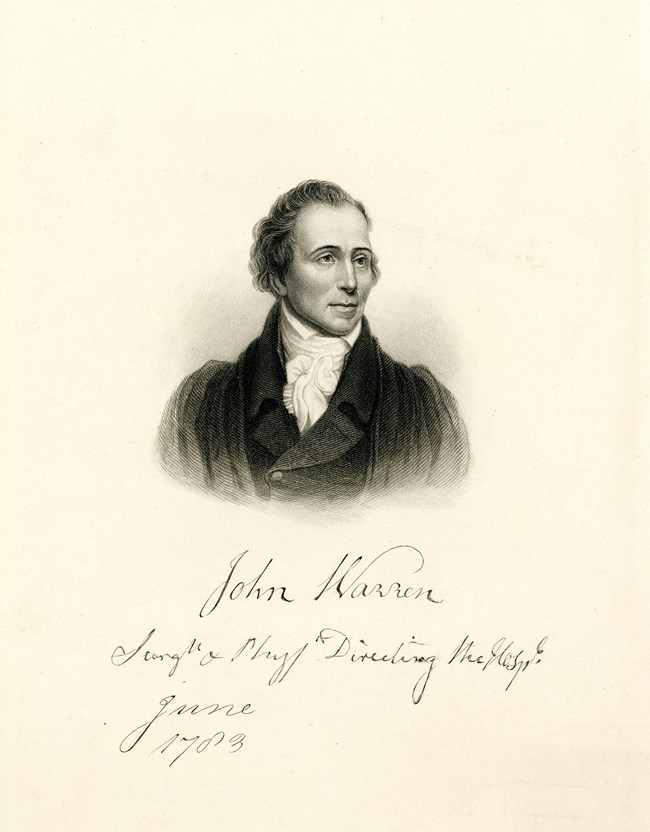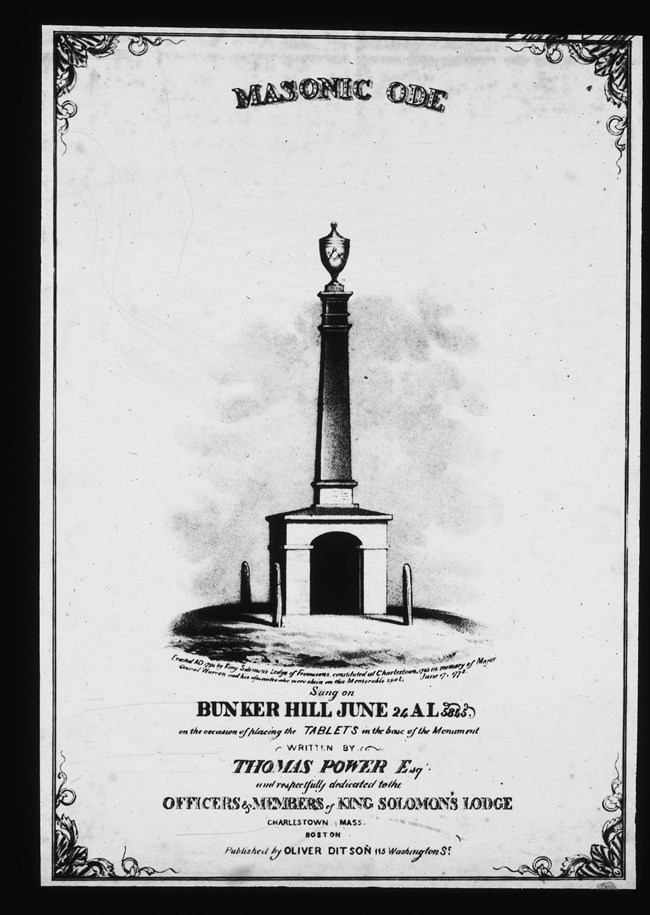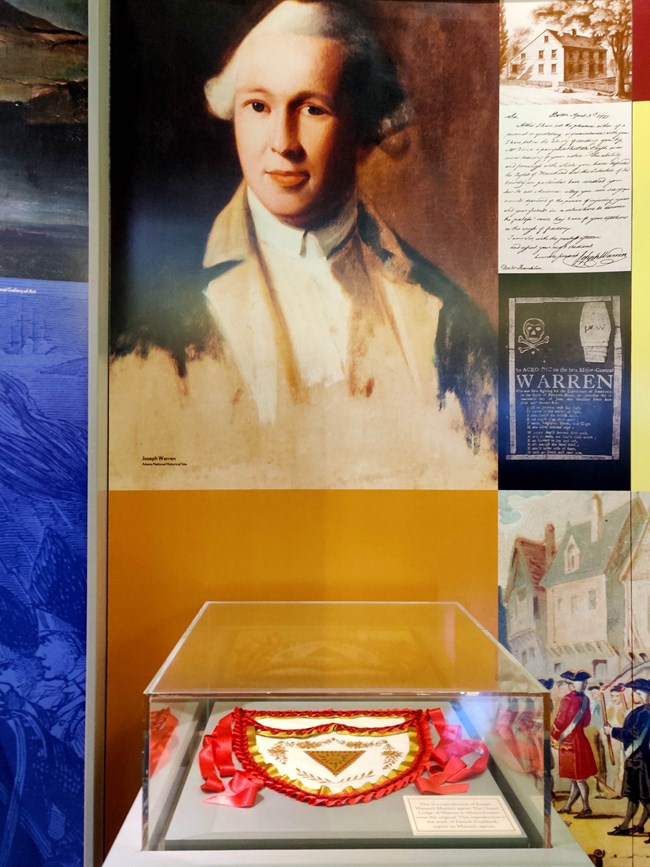Last updated: March 30, 2023
Article
King Solomon's Lodge
The ninth oldest Masonic Lodge in Massachusetts, King Solomon's Lodge (KSL) helped establish the practice of Freemasonry in New England. Founded after the American Revolution, KSL has ties to some of this country's founding fathers and celebrated patriots.
What is Freemasonry?
American Freemasonry is a fraternal voluntary association. Masonic Brother C. C. Hunt defined Freemasonry as "an organized society of men symbolically applying the principles of operative masonry and architecture to the science and art of character building."[1] The fraternity's values align with "European Enlightenment ideals of liberty, autonomy, and God as... a Creator who largely left humanity alone."[2]
Masonry, as a fraternal organization, dates to the Middle Ages and has ties to the building of King Solomon's Temple in Jerusalem. "Lodge" refers to both the places of meeting for the fraternal order, as well as the group of men making up each congregation. The men also refer to each other as Brothers, including those from Lodges other than their own. Many of the United States' founders, including George Washington, Paul Revere, John Hancock, and Benjamin Franklin, participated as members of Masonic Lodges. The first Lodge in the American colonies opened in Boston in 1733.[3]
Today, there is a lot of misunderstanding of Freemasonry. This may be due, in part, to the secrecy of the organization. Symbols play an important role in the society as well, which adds to the mystery. These symbols are reflected in the Officers' Jewels. The jewels represent the role assigned to some members of the Lodge known as officers.[4]

Center for the History of Medicine at Countway Library, Harvard University.
The fraternity is also rather exclusive. Traditionally, Freemasons could only be "freeborn" men of at least 21 years of age who practiced a monotheistic religion. "No Bondmen, no Women, and no immoral or scandalous Men"[5] could join the order. Today, the age has lowered to 18 years old and there are parallel organizations open to women, people of color, and children.
The Founding of King Solomon's Lodge
King Solomon's Lodge formed as a member of the larger Grand Lodge of Massachusetts. Founded in 1769, the Grand Lodge of Massachusetts was the first Lodge for Ancient Free and Accepted Masons in the British American Colonies. The Grand Master of Masons in England granted a commission to organize the Saint John's Grand Lodge in the Massachusetts Bay Colony in 1733. Later, in 1769, the Lodge re-established itself as the Massachusetts Grand Lodge, "by Patent… of the Grand Master of Masons in Scotland." This associated the Massachusetts Grand Lodge with Ancient Masonry, as opposed to the Modern Masonry that Saint John's was established under.[6]
Prominent patriot leader, Joseph Warren, assumed the role of Most Worshipful Grand Master who led the Lodge in this decision and was therefore Massachusetts Grand Lodge's first Grand Master. John Warren, Joseph's brother, also served as the Grand Master of the Grand Lodge in 1783 and, during that time, commissioned the establishment of King Solomon's Lodge.[7]
Following the end of the American Revolutionary War in 1783, six Masonic Brothers, including Paul Revere, signed the charter for King Solomon's Lodge in Charlestown. Paul Revere also made the Officers' jewels and candlesticks, still present in the Lodge room today.[8] For the first 20 years of the Lodge's existence, members met at the Warren Tavern in Charlestown.[9] Similar to other Freemason Lodges, KSL focused on philanthropic work, while also promoting the ideals of the new nation.

Charlestown Public Library, Boston Public Library
Connection to the Battle of Bunker Hill
After its founding, one of the first actions the Lodge took was to pay tribute to fellow Masonic Brother and revolutionary war hero, Dr. Joseph Warren. Warren fought and died during the Battle of Bunker Hill in 1775, the first major battle of the American Revolutionary War. Although he had no prior military experience, officers commissioned Warren as Major General before the battle. During the battle, he stepped back from command and fought alongside the soldiers: "he fell a glorious volunteer when he might have taken the command."[10]
Almost 20 years after the battle, in 1794, King Solomon's Lodge dedicated a monument to the memory of their Brother, Dr. Joseph Warren:
We, citizens of Columbia, not content with having raised a monument of gratitude in our hearts, would present one to the eye of future generations. Directed by these laudable motives, King Solomon's Lodge of Free and Accepted Masons have erected on Mount Warren the Pillar you behold.[11]
The Masonic Brothers built and dedicated the monument on Breed's Hill. They chose to place the monument at the approximate site where Warren fell during the colonists' retreat. James Russell, a local magistrate, and fellow Freemason, donated the plot for the monument. The design consisted of a "Tuscan pillar, eighteen feet high, placed upon a platform eight feet high."[12] A gilt urn adorned the top, "bearing the initials and age of Warren: 'J. W. Æ. 34.'"[13] The Lodge also had the following engraved on the original monument:
Erected A.D. 1794, by King Solomon's Lodge of Freemasons, constituted at Charlestown, 1783, in memory of Major General Warren and his associates who were slain on this Memorable spot, June 17, 1775.[14]
While this monument no longer stands today, a granite plaque still marks the spot where Major General Warren fell.

NPS Photo/Dahms
Building a New Monument
The founding of the Bunker Hill Monument Association (BHMA) in 1823 led to changes for Breed's Hill and the monument. King Solomon's Lodge donated the land and original monument to the new association. The agreement included the condition that the BHMA would preserve "some trace of its former existence"[15] in the new monument. The Bunker Hill Monument Association followed through on their promise to the Lodge. A replica of the original monument sits inside the obelisk today.
In 1825, a celebratory procession marched through the streets of Boston from the Common to Bunker Hill. The Marquis de Lafayette, a Masonic Brother, then laid the ceremonial cornerstone of the new monument. Senator Daniel Webster, also a Freemason, addressed a large crowd at this ceremony. At the Monument's dedication ceremony in 1843, Webster also gave an oration. Webster and Lafeyette were both Masons themselves, and many others likely attended and participated in the ceremony. However, KSL was not officially represented during the dedication, as it took place during the anti-masonic era in the country.
The Present
King Solomon's Lodge is still active today. The Lodge moved to Somerville in 1899. It changed locations a few times over the years due to fires, temporary tenancy, and merging with other Lodges. King Solomon's Lodge currently meets at the Highland Masonic Building on Highland Avenue in Somerville. This most recent move came shortly after merging with Sagamore Lodge from Medford in 1986.[16]
Today, the Lodge continues to:
help men to be the best possible versions of ourselves, and make connections with men who share the same values... [welcoming] men of every country, religion, race, age, income, education, and opinion.[17]
Footnotes
[1] "What is Freemasonry?," King Solomon's Lodge, accessed March 2023, https://kingsolomonslodge.com/. KSL quotes Brother Charles Clyde (C. C.) Hunt, who wrote "Masonic Symbolism" in 1939. He was the Grand Secretary of the Grand Lodge of Iowa.
[2] Peter Feuerherd, “The Strange History of Masons in America,” JSTOR Daily, August 3, 2017, https://daily.jstor.org/the-strange-history-of-masons-in-america/.
[3] Feuerherd, “The Strange History of Masons in America,” JSTOR Daily.
[4] Examples of these would be that The Worshipful Master wears a jewel of the right-angle square. This symbol signifies that he holds the responsibility of making sure that all the workings of the Lodge are "true" just as the right-angle square does in masonry work. The Senior Warden wears the level, and it is the Warden's job to ensure equality among the masons within the Lodge. To learn more about jewels and Lodges, read: Masonic Find, "The Lodge Officers Jewels (& Their Significance)," MasonicFind, accessed March 2023, The Masonic Lodge Officers' Jewels (& Their Significance) (masonicfind.com); "Massachusetts Lodge," Masonic Genealogy, accessed March 2023, MassachusettsLodge - MasonicGenealogy.
[5] Neil L. York, "Freemasons and the American Revolution," The Historian 55, no. 2 (1993): 315–30, http://www.jstor.org/stable/24449525.
[6] "Massachusetts Lodge." Masonic Genealogy. Accessed March 2023. http://masonicgenealogy.com/MediaWiki/index.php?title=MassachusettsLodge#ORIGIN_AND_CHARTER.
[7] "Massachusetts Lodge." Masonic Genealogy.
[8] "The History of our Lodge," King Solomon's Lodge, accessed March 2023, https://kingsolomonslodge.com/#about-1.
[9] "The History of our Lodge," King Solomon's Lodge. The now historic Warren Tavern still stands today and is one of the oldest buildings in Charlestown as the Battle of Bunker Hill destroyed many structures.
[10] George W. Warren, The History of the Bunker Hill Monument Association During the First Century of the US (Boston, MA: James R Osgood and Co., 1877), 4.
[11] Warren, The History of the Bunker Hill Monument Association During the First Century of the US, 11.
[12] Warren, The History of the Bunker Hill Monument Association During the First Century of the US, 9.
[13] Warren, The History of the Bunker Hill Monument Association During the First Century of the US, 9.
[14] Wolcott Cutler, "Cover of Masonic Ode by Thomas Power." Photograph. [ca. 1845–1925], Digital Commonwealth, https://ark.digitalcommonwealth.org/ark:/50959/8k71p7473 (accessed March 20, 2023).
[15] "The History of our Lodge," King Solomon's Lodge.
[16] "The History of our Lodge," King Solomon's Lodge.
[17] "Becoming a Mason," King Solomon's Lodge, accessed March 2023, https://kingsolomonslodge.com/#contact-1.
Bibliography
Britannica, T. Editors of Encyclopaedia. "Freemasonry." Encyclopedia Britannica, October 18, 2022. https://www.britannica.com/topic/Freemasonry.
Cova, Antonio Rafael de la. "Filibusters and Freemasons: The Sworn Obligation." Journal of the Early Republic 17, no. 1 (1997): 95–120. https://doi.org/10.2307/3124644.
Feuerherd, Peter. "The Strange History of Masons in America," JSTOR Daily, August 3, 2017. https://daily.jstor.org/the-strange-history-of-masons-in-america/.
King Solomon's Lodge. Accessed March 2023. https://kingsolomonslodge.com/.
"King Solomon" Masonic Genealogy. Accessed March 2023. http://masonicgenealogy.com/MediaWiki/index.php?title=KingSolomon.
Masonic Find. "The Lodge Officers Jewels (& Their Significance)." MasonicFind. Accessed March 2023. https://masonicfind.com/jewels-of-the-lodge-officers.
Massachusetts Freemasons. "Our Past Informs Our Future - History of Freemasonry." Accessed March 2023. https://massfreemasonry.org/what-is-freemasonry/history-of-freemasonry/.
"Massachusetts Lodge." Masonic Genealogy. Accessed March 2023. http://masonicgenealogy.com/MediaWiki/index.php?title=MassachusettsLodge#ORIGIN_AND_CHARTER.
Warren, George W. The History of the Bunker Hill Monument Association During the First Century of the US. Boston, MA: James R Osgood and Co., 1877.
Wilson, John. "Voluntary Associations and Civil Religion: The Case of Freemasonry." Review of Religious Research 22, no. 2 (1980): 125–36. https://doi.org/10.2307/3510655.
York, Neil L. "Freemasons and the American Revolution," The Historian 55, no. 2 (1993): 315–30, http://www.jstor.org/stable/24449525.
